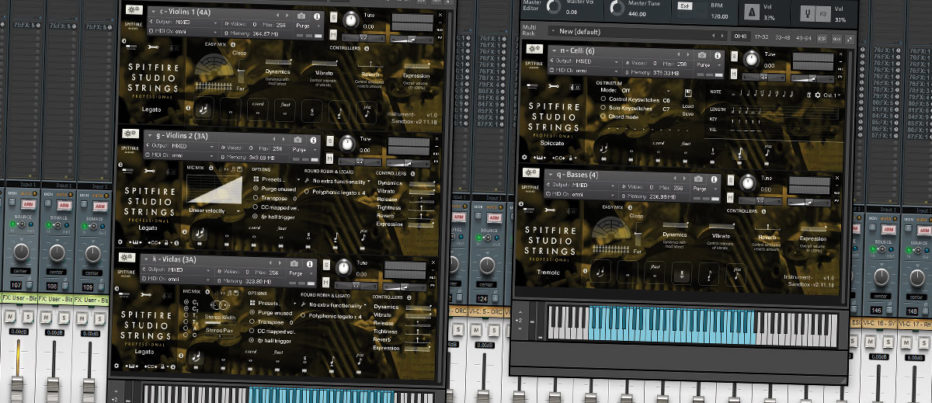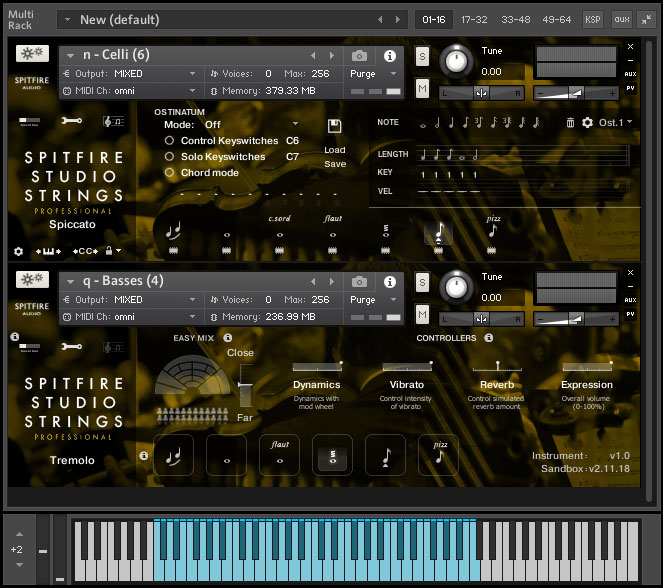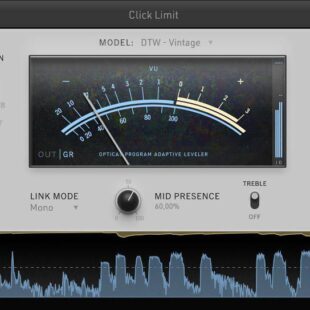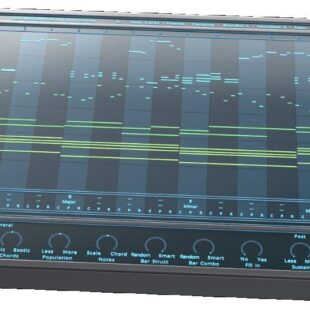SPITFIRE AUDIO STUDIO STRINGS – FORTE MAGNIFICO
Hi, welcome back to StudioWise. This week we’re testing Spitfire Audio’s brand new Studio Strings Pro sample library, a slight deviation from the company’s typical offerings, in that the ensemble was recorded at Air Studios’ much smaller and more intimate Studio One to control the environment as much as possible, focusing more on clever mic placement and digital reverb for ambience.
Of course, Spitfire Audio and Air Studio are well known for producing wonderfully immersive and atmospheric sample libraries, so it’s an unusual step to purposely limit the natural ambience of such a characteristic studio like this. The benefit should be greater flexibility for post-processing with more control over the instrument tone, something many producers will love.
Sounds great on paper, let’s get it installed and see how it performs in the DAW.
Overview
Spitfire Audio Studio Strings is available in two variants, Core and Pro. The core edition features a full 30-piece ensemble section, with 148 articulations, legato and “decorative” patches such as grace notes, trills, falls, crescendo, FX and the like. The session was recorded to analogue tape by Simon Rhodes and features up to 3 dynamic layers on long articulations and 8 (!) on shorts.
The Pro edition we are testing has a whopping 232 total articulations, 6 microphone configurations and two divisi sections for violin 1 and 2, viola and cello. The library requires Native Instruments Kontakt player (free or paid version) and MIDI keyboard controller with mod wheel and, ideally, multiple fader controllers for dynamics, volume, vibrato etc.
Installation is very streamlined now with Spitfire’s excellent download manager, one of the best in the industry. Keeping tabs on your collection and any updates is a breeze, with your purchases simply showing up inside the app ready for you to download.
The eye-bulging 210 GB download and over 412GB free space requirements for installation is a little hard to swallow, and it’s increasingly apparent one should include the cost of a new SSD hard drive with any purchase from now onwards. Fortunately, Spitfire offers a boutique SSD hard drive service where they can pre-instal your software onto a purpose spec drive and deliver it worldwide for a nominal fee.
The impressive amount of sample content is split across five instrument categories; 1st violins with a full group of eight, or two-four player divisi group sections with a sixteen-player blend of both. 2nd Violins, again split into eight or four players divisi groups or the sixteen-player blend. Violas and cellos both have Six, three and twelve players groups and finally basses with just a single four-player group.
The core patches are listed alphabetically from A to Q, with stereo mix alternatives and an advanced folder containing what Spitfire call “Extended Techniques”, which are all of the more unusual articulations that won’t fit into the core patches.
Included in addition to the basic patches mentioned are full legato articulations, lighter load economic options, nifty “Time Machine” patches for altering sample length and each articulation split out as individual patches.
A full selection of articulations is included, such as your typical longs, shorts, con sordino, spiccato, tremolo and pizzicato of course. Also, a large selection of more specialised in interesting styles, such as flautando, the excellent super Sul Tasto for a feather-light touch over the fingerboard, and the punishing Bartok (where players snap the strings so hard against the fingerboard it slaps percussively).
In The Studio
Love or hate the default Native Instruments Kontakt GUI, Spitfire’s layout follows the same well-beaten track of other flagship products in the range making for a consistent user experience.
The sepia yellow on black is the defining visual clue over other libraries, but there is a nice sense of familiarity when using the library. Of course, the same grumbles as always directly more toward Kontakt for lack of UI scaling, everything is positively tiny, especially the Ostinatum which is an exercise in frustration to program without a microscope.
Performance is rather good, even on our modest test system (i5 3200 16GB RAM Win10), with larger patches loading quickly and almost no decreeable lag running larger 8-10 instance templates (with single articulations).
Loading extra microphones is the most intensive operation, understandably as each loads an extra layer of the full sample set. Happily, Studio Strings has been designed for running single close mics only, so you can do away with the RAM-hogging ambient and outriggers and opt for digital reverb alternatives.
The Sound
Right off the bat, the intimate and rather raw sound of the instruments is apparent. Though I was surprised by the number of microphone setting options available for what is essentially meant to be a dry recording, the versatility of the setup becomes more apparent once you disable the built-in reverb and route your own external effects.
Two close mic positions are available, both sounding very detailed as expected. The manual doesn’t state the brand used, but there is a large tonality difference between the two. Close 1, for my ears at least, sounds more airy and open, whereas Close 2 is darker and more ribbon-like. Close 2 has been focused on the lead player of the section and thus a good choice if you want more of a soloist focus. Great care has been taken when recording to avoid phase cancellation, which I could detect none when mixing.
Twin Decca tree mics are included, each with three Neumann M50s in an LCR configuration. One tree is panned more central and focused, the other in omni to capture more ambience from the room. I love the contrasting sound between these two options, plenty of mix options with just these two setups.
Outrigger mics are usually placed at the extremities of the group but in line to the Decca tree so they have a similar sound but with the extra width as you would expect.
Finally, the ambient mics are a pair of no-name condenser mics placed out as wide and high as possible in the small studio. They have a wonderful airy sound in contrast to the rest and bring a more hi-fi quality to the sound. There is some room ambience captured, but only a slight reverberation slap back, certainly nothing comparable to the normal vast ambient recordings.
Clearly, a lot of time and thought has gone into the group divisions (divisi). Splitting the larger sections into smaller groups allows for each to play harmonising lines, or perhaps you prefer to thin out the players for a more intimate sound.
So with a careful mix selection of mics, I managed to find an acceptable balance of grit and room for my liking. Spitfire has included a single-fader IR reverb which sounds quite nice. Though this effect will never match the huge weight of ambience from Albion or Symphonic Strings, it can sound impressive with a considered complement of Decca, ambient and outrigger mics.
Application
Due to the violin and basses extreme left and right seating positions relative to the Decca mics, there is a tendency for a cross-room echo from the outrigger and ambient mics. The violins play a note, for example, then the echo reverberates from the opposite speaker. Though not offensive in any way, this is certainly a more “pop” sound and might irk some composers.
In fact, on the whole, Studio Strings has what is best described as a pop sound due to its dry and quite gritty nature. The vast room ambience we’re familiar with from Air Studios requires digital reproduction using 3rd party reverbs, adding more to the contemporary sound.
Also, the touch velocity feels a little over-tuned next to Albion One or Symphonic Strings. Studio Strings Pro wants to bark at you for pushing too far into the red if you hit the keys too hard. This is more apparent on the short articulations, but even on longs, care is required to control mod wheel dynamics and keep the entire orchestra reigned in.
Of course, in times when more impact is required, this is fantastic. The orchestra feels more responsive and edgy, like a few extra cups of coffee we fed to the players before they recorded.
This effect is probably felt more than heard, but most noticeably for me in the shorts which feel very immediate, almost hair-trigger instantaneous. Pop guys will love this, those used to Spitfire’s previous lumbering smooth and gentle giant libraries may find it a little jarring.
It’s hard to place where Studio Strings sits in the Spitfire line-up, in as far as the sound output is concerned. It’s the polar opposite to any of the EVO Grid and Olafur Arnalds collections, of course, but closer to Chamber Strings without the huge room.
For me, the real drawcard for Studio Strings is the dry recording location and the emphasis on post-processing over natural ambient mic recordings. I love this freedom to route out from Kontakt with my own reverbs and effects. When taken to extremes Studio Strings feels right at home with even more bazaar synthesis, morphing and mangling. I had no trouble routing its output through multiple morphing effects, distortions, LFO and filter synths finding excellent results, not too far removed from Spitfire’s excellent eDNA synth.
Possibly if I had to pigeonhole Studio Strings, I would suggest it is better suited for contemporary productions, sound designers or artists looking for a traditional string sound, but the freedom to work with synths and other instruments. I don’t feel Spitfire market Studio String towards a younger, more pop-orientated audience, but it would certainly be the library I would suggest to someone like that looking for a string sound compatible right out of the box with modern production techniques.
It is clear, however, Spitfire Audio intend the library to be used in conjunction with other sound libraries, and even real-world players. The manual features some very sound suggestions on using the product, as well as some weirdly self-defeating advice to limit the use of sampled strings and focus on live players for all the “stuff that matters”.
Conclusion
Another fantastic product and one that fills a gap in the orchestral catalogue for modern and more pop-orientated composers.
I particularly like the openness of the sound and the flexibility to use the external processing option. While 3rd party reverb is an obvious direction, I found more creative interest when experimenting with synthesis and sample manipulation.
The massive amount of content included is neverending when exploring through the presets. Both pro and core editions are beasts and require serious hardware considerations, but ultimately the choice between each comes down to if you want Divisi or not. The additional mic options in the Pro edition are an indulgence, but not enough to double the price, considering the ethos behind the library is to output the dry mix to use 3rd party reverb.
The core edition certainly puts Studio Strings within reach of modest budgets with the vast majority of features you need and 100% of that fantastic sound. Producers may be tiring of swiping the credit card for yet another “flagship” Spitfire library – and most certainly the hard drive space upgrade, but this is easily one of the best orchestral libraries of its type available and a wise investment for those looking for a more contemporary sound with flexible processing options.
Spitfire Audio continue their lineage of quality, high content-to-cost ratio products. Great sounding, excellent performance and now more hip to the kids, Spitfire Audio has once again hit a home run.
For full details and purchasing options, check the Spitfire Audio main website www.spitfireaudio.com







